Agrovoltaics Innovation: Boosting Solar Energy While Supporting Farming
Agrovoltaics Innovation: Boosting Solar Energy While Supporting Farming
India is now shifting towards renewable energy and solar energy, aiming for 500 GW capacity by 2030. The new projects like the Pavagada Solar Park is one such example that is driving solar power but also raises land issues. To overcome such difficulties, Agrivoltaics has been introduced.
Agrivoltaics is the combination of farming and solar energy on the same land, benefitting both agriculture and energy production. This approach allows renewable energy production, without sabotaging the farmland.
In this blog, we’ll explore the essentials of Agrovolataics in India, and how it will affect India in the future developments.
What is Agrovoltaics
Agrovoltaics is a renewable method, where both solar energy production and farming can be done on the same piece of land, simultaneously. This method is useful for farmers for growing crops and generating electricity.
As the number of land owners and farmers are more, this method is a boom in India. Having to choose between solar power or farming, Agrovoltaics solves the misery.
It is very useful in rural areas where pollution is low and land is valuable. This method also allows users to earn extra income from solar energy while still producing crops.
How Does it Work
In this, solar panels are set at a height and at angle of 10-15 degrees, so that sunlight reaches the crops below them. This gives ample amount of light for crops to grow and a perfect angle for solar panels to produce electricity.
Some setups use tracking systems as well, which adjust the panels according to the sun’s position automatically. The shade from the panels also protects the crops from extreme rough conditions.
The water used for cleaning the panels can be reused for irrigation. This saves water and helps promote eco-friendly farming practices.
Benefits of Agrovoltaics
After implementing these models, below were the benefits that were observed for both Farmers and solar developers.
For Farmers: Additional income from leasing land or selling solar power
- Reduced irrigation needs
For Energy Sector
- Efficient land use
- Reducing competition with farmland
- Reduced panel overheating due to crop yield, improves solar efficiency
Future Potential
Agrovoltaics have a strong potential in India, especially with the government aiming for renewable energy and farmer support. This method can evict land conflicts and enhance rural incomes at the same time.
India aims to meet its solar energy targets under the National Solar Mission and Agrovoltaics may play a big role in combining green with food security.
With this increasing awareness and support, this model may become a smart solution for sustainable development, by balancing energy needs, climate goals and agricultural productivity.
Case Study
Smart Roof Solar successfully completed its first Agrovoltaic project in Delhi-NCR, transforming 3 acres of land in Hamidpur village into a dual-purpose solar and agricultural space. The project featured the installation of 1,800 solar panels, supported by three 320kW inverters, an ACDB/electric panel, and a 3-in-1-out structuring system.
To ensure efficient power management, a 1.125 MVA transformer with a voltage level of 800/11,000V was installed, along with a VCB panel and an RMU unit. This setup allows seamless energy distribution while maintaining high reliability and safety standards.
This project highlights Smart Roof Solar’s commitment to innovative renewable energy solutions that combine sustainable farming with solar power generation.
Conclusion
Agrovoltaics in India is almost like a dual mission, familiarising with renewable energy on land and boosting farmer’s income. With policy support, investment models, technical standardization, and scaling from small pilots, India can turn agrivoltaics into a mainstream approach.
This could transform rural livelihoods, resolve land conflicts, and dramatically contribute to India’s 2030 energy goals. Partner with Smart Roof Solar to bring sustainable energy solutions to your land today. Partner with Smart Roof Solar to bring sustainable energy solutions to your land today.
FAQs
Q1: Can existing solar farms be converted into agrivoltaic systems?
Ans: Yes, it’s possible to modify existing solar farms into agrivoltaic systems by adjusting panel heights or layouts to allow space and light for farming underneath. However, this retrofitting may require additional investment and structural changes, depending on the original system design.
Q2: What type of farmers are most likely to benefit from agrivoltaics?
Ans: Small and marginal farmers in arid and semi-arid regions, where water scarcity and harsh sun conditions limit crop productivity, can benefit the most. Agrivoltaics can improve soil moisture retention, reduce heat stress on crops, and generate additional income from solar energy.
Q3: Is government insurance or crop protection available for agrivoltaic farms?
Ans: Currently, most crop insurance schemes in India do not specifically cover agrivoltaic setups. However, as the model grows, state governments and insurers may introduce specialized policies to protect dual-use systems from extreme weather, technical failures, or crop loss.
Q4: Can agrivoltaic systems support livestock or only crops?
Ans: Yes, some agrivoltaic models are designed to support livestock grazing, especially in areas with elevated panel installations. Sheep and goats, for example, can graze under solar panels without damaging the equipment, helping farmers optimize land use further.
Q5: Do agrivoltaic systems qualify for carbon credits or green financing?
Ans: Agrivoltaic projects may be eligible for carbon credits or green financing, especially if they contribute to emissions reductions, renewable energy production, and sustainable agriculture. However, eligibility depends on certification standards, project documentation, and partnerships with verified agencies or ESG programs.
Suggested Articles
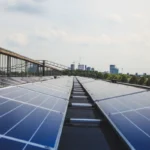
COP27: Harnessing Solar Energy for a Sustainable Future
COP27 is the latest in a long line of global climate conferences, which have been held regularly since 1994. The United Nations Framework Convention on Climate Change (UNFCCC) was created at the 1992 Rio Earth Summit.

UP Electricity Tariff Increase 2015-16: Rates Rise by Rs 0.40–1.00 per Unit – What Consumers Need to Know
Uttar Pradesh has increased electricity tariffs for 2015-16, ranging from Rs 0.40 to 1.00 per unit. This update explains the revised rates, the sectors affected, and what consumers need to know about the tariff hike.
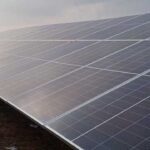
Solar Power System Efficiency: How to Calculate for Residential, Industrial & Commercial Use
Understand and measure your solar system’s performance. Maximize energy output at home, industrial units, and commercial buildings
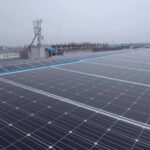
Stop Losing Power: The Ultimate Guide to Solar DC & AC Cable Sizing for Max Efficiency
DC and AC cabling are the lifelines of any Solar PV Rooftop System. Learn how proper cable selection, connection design, and installation can help achieve optimum power output and long-term safety.
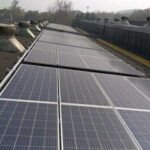
How to Improve Solar Panel Performance for Optimal Energy Output
Performance degradation in solar panels reduces energy output over time. This guide explains how to factor in degradation when calculating annual yields, ensuring accurate estimates for residential, commercial, and industrial solar installations.
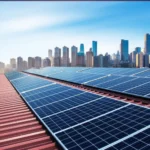
India and Japan Strengthen Renewable Energy Cooperation
India and Japan have initiated a partnership under the Asia Energy Transition Initiative (AETI) to support India’s clean energy transition. India has set an ambitious target of achieving net-zero by 2070, while Japan aims to achieve the same by 2050.
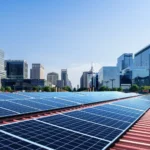
UP Government Incentive: Stamp Duty Exemption for Solar Land
Uttar Pradesh offers stamp duty exemption on land for solar projects, encouraging investment and growth in renewable energy.

How Installers Cut Costs on Solar PV Module Mounting Structures
Solar PV mounting structures can significantly impact project cost. Explore how expert installers optimize design, materials, and labor to achieve safe, durable, and cost-effective solar installations